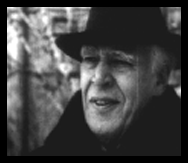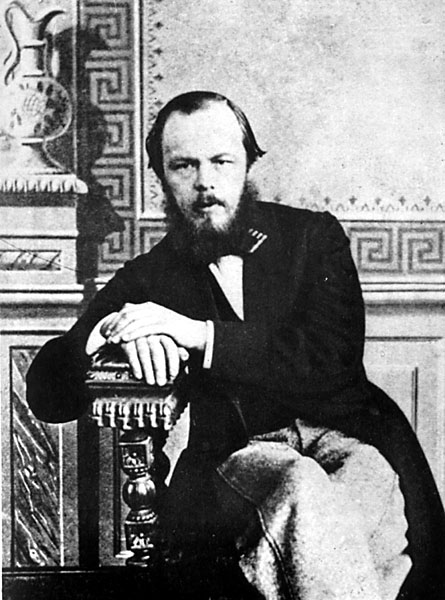From Director's Page in Acting Directory @ Theatre w/Anatoly
Often I find myself in a position of a couch. Of course, actors are insecure, even the most arrogant ones. How else? How do you know that it is right whatever you do? You're in, you don't see yourself. You only have a feeling -- yes, yes, but....I leave this situation with a thought that each actor has to learn how to be his or her own couch and trainer. It does take skill of self-evaluation, critical observation, living a separate non-actor's existance. One tool I always adviocate -- Actor's Journals (you it from your classes). You have to record your state of mind, your progress, your goals -- you have to talk to yourself!
Another -- developing a little director sitting inside you with his voice and his talk. It takes a journey into other lands -- general understanding of the script ourtside of your role, understanding designers, even the ideas behind the lighting plot. Yes, it will help you to remember the laws of the acting areas. You will remember that once established your positions can't be change -- and you better be sure that you are where you want your character to be.
Directors love actors who meet them half way; we are digging the channel from two opposite sides, friends. We have to develp macro-action (director) which coinsides with the micro-actions (actor). Actor has to welcome the limitations imposed by the text, directions, design, etc -- only than you have YOUR ACTOR's SPACE for development of your role. Do you know where this space starts and ends?
"Too bad if memorized words are ahead of thoughts. Too bad if a thought expression is ahead of development of the feeling wich originated this very thought, this feeling which is an essence and a root of thought." Stanislavsky (126)
I knew that Teacher and Master one day will meet in my class... So, that was the day, when Teacher was in class "Direction and Acting," Master showed and looking at me, students and Stanislavsky standing at the doorframe, grimming. Of course, I knew that Meyerhold respected Stanislavsky as an actor, but not a director. Stanislavky also knew it. Oh, God! I didn't want the scene in front of the students! And of course, I didn't want to get between the two....
Finally, Teacher noticed Master and there was a long pause.
Meyerhold @ Work * An actor is only merchandise. ~ Chow Yun-Fat
Summary
Theatre Theory : Director ... and Directing :In the theatre, the actor is in total control. The director wasn't in the house last night, the designer wasn't there, the author's dead. It's just us and the audience. Ian McKellen
-- It is a great help for a man to be in love with himself. For an actor, however, it is absolutely essential. [ Robert Morley ]
Notes
..."... The seminal American director Elia Kazan once put forward a far more daunting list of prerequisites that included expertise in economics, warfare, religion, food, travel, sports, and a host of other subjects. His point was that to create the world of a play, to sew a whole cloth from the threads of language, a director has to know a good deal about many things. For the director and critic Haroldd Clurman, the job entailed being "an organizer, a teacher, a poilitician, a psychic detective, a lay analyst, a technician, a creative being...All of which means he must be a great lover." A director is a medium--between actors and text, between the text and the physical elements, and of course between the producer and the production.
Directing demands polymaths, those who are at home in a library, a rehearsal hall, a pruduction meeting, and a producer's office. To construct entire worlds and coordinate so many elements, one must have an appreciation for literature, an understanding of the actor's craft, and a visual and verbal acuity. Other than an orchestra conductor, no other artist is as dependent on the contribution of others. Ultimately, the director is a creator of communities--someone who can recognize talent and inspire the very best from other artists, lead them but welcome their contributions, and make everyone feel they are important partners." Thinking Like a Director: A Practical Handbook by Michael Bloom :
THE DIRECTOR AS STORYTELLER
In the most basic terms, the director is a production's primary storyteller. A play has only one plot (including subplots), but it contains many potential stories. The interpretation of the primary characters largely determines the story, so in effect, every production of the same play will inevitably tell a different tale. One of the most important functions a director fulfills is determining, with the actors and designers, which story to tell and how to tell it coherently.
As plots have become less linear, the job of telling a story has grown more complicated. While postmodernism and other aesthetics have increased our awareness of the disjunctions inherent in most stories, it has also incited some to reject identification betweeen characters and audience--and even storytelling itself--as passe. At the same time, many artists, in theater, film and novels, have demonstrated that coherent stoeries can accomodate contradictions and reflect a fragmented world.
One instinct in particular is indispensable to storytelling: the ability to discover what delights an audience. Throughout his writings, Peter Brook, one of the extraordinary minds of the modern theater, recounts how each time his ensemble of actors visited a remote corner of the world, whether a village, a hospital, or an open field, they were obliged to relearn how to hold an audience's attention. No matter how ambitious or experimental his work, Brook has never drifted far from the simple questions of what makes an audience respond. If this ability seems basic to doing theater, it is all too often absent in practice. Some time ago I attended a performance by a local ensemble that advertised stylized, cutting-edge theater based on new acting theories but actually produced a cartoon that completely concealed the performers as human beings. The play was meant to be a comedy, yet when I scanned the room, only the stage managers, seated behind me, were laughing. The production was raucous but completely failed to entertain because the actors and director were far too absorbed in celebrating their process to gauge the audience's attention.
THE DIRECTOR AS ANIMATOR
Nearly everything a director does is in the service of animating the story. To that end, most successful directors employ twin points of view simultaneously. One consists of living inside the play, discovering its energy by probing and empathizing with the characters' deepest desires and flaws. Using an actor's basic tools--action, obstacle, and given circumstances--the director animates the acting in a method, and with a vocabulary, that is organic to most actors.
By analogy, if we were to examine an automobile closely, we'd want to look at it from both inside and outside. We would study its engine to learn how it runs, and then we would scrutinize its design to determine its structure. This dual perspective would disclose far more than merely describing its color or accessories, which, in analyzing a play, would correspond to the superficiality of hunting for themes rather than probing more deeply for the inner workings of a play--its motor.
Like many actors, most directors work from inside out and from the outside in. They concentrate not only on the life of the characters but also on the play's structrual or external elements, including its central conflict, function, event, architecture, and suspense. As this book strives to demonstrate, in a dynamic directorial mindset these two angles of vision work in tandem, with each balancing the other.

instead of links page:
...

 Nearly all film directors are film school graduates. Film school students must complete their own short films by graduation; you should be prepared to work under difficult conditions, share space, and convince actors to work for little or no money. Aspiring film directors prove themselves by directing stage productions, doing film lighting design, or establishing a history of assistant or associate directorships. This last is the most common route, as professional experience and networking contacts can be combined in a brief but rigorous period of time. There is no specific ladder to climb. Many aspiring directors develop clips of work to recommend them to industrial or television or commercial directing jobs, which pay well and serve as working credentials. Those entering this career should be warned that twenty-hour days are not unusual.
Nearly all film directors are film school graduates. Film school students must complete their own short films by graduation; you should be prepared to work under difficult conditions, share space, and convince actors to work for little or no money. Aspiring film directors prove themselves by directing stage productions, doing film lighting design, or establishing a history of assistant or associate directorships. This last is the most common route, as professional experience and networking contacts can be combined in a brief but rigorous period of time. There is no specific ladder to climb. Many aspiring directors develop clips of work to recommend them to industrial or television or commercial directing jobs, which pay well and serve as working credentials. Those entering this career should be warned that twenty-hour days are not unusual.

 directing -- the art of leading dramatic performances on the stage or in films. The modern theatrical director is in complete charge of all the artistic aspects of a dramatic presentation. It is the director’s first task to discover a central mood or idea in the text of the play to be performed that will serve as a unifying determinant for the interpretation of individual scenes and characters. Then he or she must work out the movement of the actors on stage and the pacing of each line and scene. Finally, the director helps plan the lighting, scenery, sound effects, and musical accompaniment for the production. All the director’s efforts are aimed at creating a fully unified aesthetic experience. [Columbia]
directing -- the art of leading dramatic performances on the stage or in films. The modern theatrical director is in complete charge of all the artistic aspects of a dramatic presentation. It is the director’s first task to discover a central mood or idea in the text of the play to be performed that will serve as a unifying determinant for the interpretation of individual scenes and characters. Then he or she must work out the movement of the actors on stage and the pacing of each line and scene. Finally, the director helps plan the lighting, scenery, sound effects, and musical accompaniment for the production. All the director’s efforts are aimed at creating a fully unified aesthetic experience. [Columbia]

